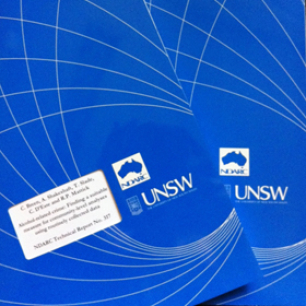NDARC Technical Report No. 166 (2003)
This Technical Report is based on a study examining the efficacy and attractiveness of a brief intervention for cannabis use among young offenders in NSW. The study was conducted as a Capacity Building Project jointly funded by the NSW Attorney General's Department, and the Australian Government's National Crime Prevention program.
It arose from earlier research by the investigators on brief cognitive behavioural and motivational interventions for cannabis use among adults and young people, and from the recognition that drug-related crime underpinned many of the major issues in the crime prevention agenda of the Commonwealth and the States. Drug-related crime is a major issue among young offenders, and level of drug (including cannabis) involvement has been shown to be a major causal risk factor in property crime (see Section1.2).
The aim of this trial was to increase the early intervention options available to young cannabis users in the criminal justice system that were not seeking treatment, to contribute to the evidence base for the efficacy of brief interventions for this group, and inform the development of policy and programs in relation to drug crime diversion for young offenders. It targeted young people who were using cannabis and involved in criminal activity, but not initiating efforts to stop use. The intervention used a 'Checkup' approach, based on similar treatments that have been shown to be useful for alcohol and cannabis problems in adults and adolescents (see Section 1.2.3).
Unfortunately the trial was hampered by serious recruitment problems, and data collection was discontinued at the end of December, 2002. During the 18 month recruitment period only 29 young people were randomised to the study. At the request of the NSW Department of Juvenile Justice, the Check-up materials were developed into a training package for their staff, and three workshops were delivered during May, 2003.
While we were unable to complete the trial and evaluate the effectiveness of the Checkup among young offenders who use cannabis, the approach has sound theoretical and empirical justification (Section 1.2.3). While a community-based study using this approach is still underway, we are presenting the consensus Check-up materials developed for this study as an information exercise, and invite the field to consider exploring this approach with young people. We strongly encourage evaluation of this approach as a means of increasing the evidence base for interventions for young people. As an aid in evaluation we have included forms for the evaluation of the Check-up sessions by the young person participating.
This Technical Report presents a review of the literature on adolescent cannabis use and interventions, the consensus treatment manual and associated Check-up materials developed for use with young offenders and a description of the methodology and results of the pilot trial. The consensus materials differ only slightly from those used during the trial. The major differences were (i) that a single assessment is presented in this manual, and (ii) the single cognitive behavioural session delivered during the trial was divided into 2 sessions, to make it more manageable. The essential elements remain unchanged.
Citation: Swift, W., Matalon, E., Copeland, J. and Howard, J. (2003) The Adolescent Check-Up for Young Offenders, Sydney: National Drug and Alcohol Research Centre.


